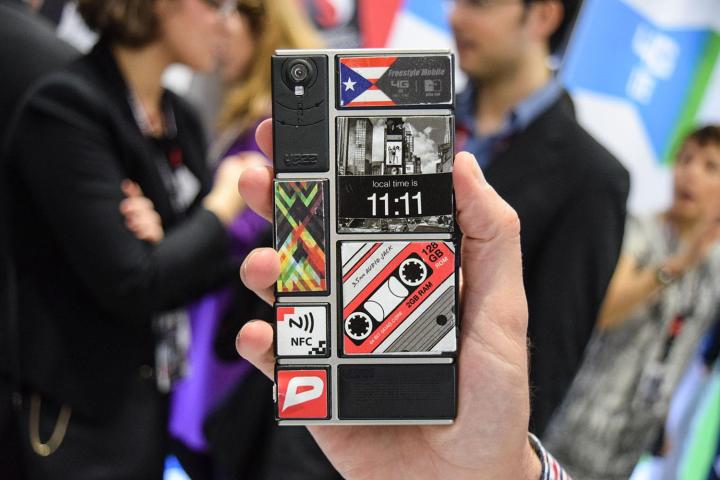
The move comes as a bit of a surprise. As late as May of this year, Google publicly projected a consumer Ara hardware launch in the first half of 2017. And at the company’s annual I/O developer conference this year, Rafa Camargo, Google’s engineering lead, demonstrated a functional developer version of an Ara phone.
The company has decided to pursue an alternative strategy, Reuters reports. Rather than produce and release an Ara smartphone itself, it will “work with partners” to bring the project’s technology to market — potentially through licensing agreements.
Project Ara was initially conceived as an easy-to-use platform with an intuitive means of swapping a phone’s individual components. An Ara phone, as originally envision, would be wholly modular in construction: everything from the processor to the display would be upgradeable, swappable, or otherwise changeable.
“Most people do not upgrade their phone to get the next processor — they do not even know what that is — but they do it to get the next best camera, or fingerprint sensor, or better speaker, all in one device,” Camargo told Digital Trends in an interview this year. “[We developed] a new set of technologies to create a more seamless modular experience for users …”
Google’s vision was ambitious, to say the least. The company said the device was designed for the estimated “six billion people” in the world who lack a smartphone: the five billion who own feature phones, and the one billion who lack a phone of any kind. It was to be affordable — the company said consumer Project Ara starter kits. which would comprise a frame, display, battery, CPU, and Wi-Fi chip, would retail for no more than $50. And it would be “open”: Google hoped to spur “hundreds of thousands of developers” to produce Ara modules from the conventional (e.g., game controller buttons and pico projectors) to the exotic (cutom medical sensors and infrared scanners).
Project Ara was announced in 2013 by phone maker Motorola, which Google had then just acquired. In 2014, the Ara team unveiled a bootable prototype at Google’s I/O 2014 conference, and in 2015 launched a refinement of that design — dubbed Spiral 2 — that it intended to test publically in Peurto Rico. It later scrapped those plans, opting instead, it said, to host pilot tests in “select locations” within the continental United States.
The Project Ara team refined the platform’s design in the meantime. Technical roadblocks prevented the sort of no-holds-barred modularity for which it’d hoped — the team was forced to settle on a “base frame” design comprising a mainboard and fixed display, CPU, GPU, antennas, battery, and sensors upon which mods attached. And the modules, which were planned to be 3D-printed, were simplified in form.
Despite the ongoing changes, the newest iteration of Project Ara seemed impressively polished. And Google announced in May that companies including Sony, Samsung, Panasonic, Harman, E-Ink, Cohero Health intended support the platform with mods of their own designs. It’s reported that the decision to can the project came from Google’s new hardware chief, Rick Osterloh.
Editors' Recommendations
- Google partners with India’s largest telecom operator on a budget smartphone
- Chinese smartphone brands build consortium to challenge Google Play domination
- Blocks modular smartwatch project gets dismantled, leaving backers in pieces


